I am guilty of making a starfish impulse buy. Have you ever been tempted? These amazing invertebrates can be hard to resist
Reef safe starfish and sea stars
The monicker reef safe can only be liberally applied to any member of the starfish family. They tend to be reef safe, right up until the point where they aren’t. Meaning…reef safe most of the time, but when especially hungry, these opportunistic eaters may dine on one of your reef tank inhabitants, at one time or another.
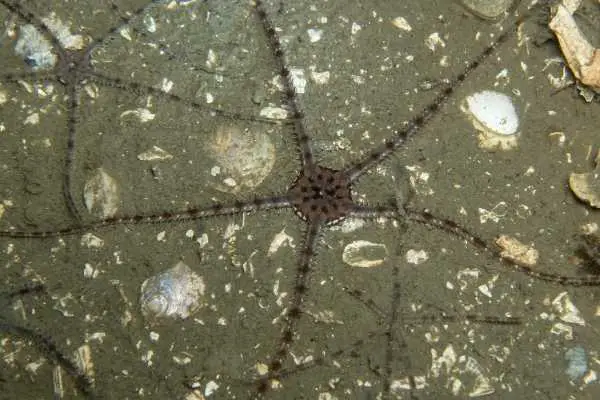
List of reef safe starfish and non-reef safe starfish for the saltwater aquarium
| Common name | Latin name | Reef safe | Size | Difficulty level | Diet |
| Asterina | Asterina sp. | Yes or No | 0.75 in. | Easy | Omnivore |
| Brittle sea star (fancy) | Ophiure protoreaster | Yes | 10 in. | Moderate | Omnivore |
| Brittle sea star (banded) | Ophiocoma scolopendrina | Yes | 12 in. | Easy | Omnivore |
| Brittle sea star (fancy yellow) | Ophiarachna sp. | Yes | 10 in. | Moderate | Omnivore |
| Red brittle sea star | Ophiocoma sp. | Yes | 10 in. | Moderate | Omnivore |
| Tiger striped Serpent | Ophiolepsis superba | Yes | 14 in. | Easy | Carnivore |
| Fancy red brittle sea star | Ophiomastix sp. | Yes | 10 in. | Moderate | Omnivore |
| Orange sea star | Echinaster sp. | Yes | 6 in. | Moderate | Omnivore |
| Carribbean serpent sea star | Ophioderma sp. | Yes | 14 in. | Moderate | Carnivore |
| Red Tile sea star | Fromia monilis | Yes | 5 in. | Moderate | Yes |
| Indian Sea Star | Fromia indica | Yes | 5 in. | Moderate | Omnivore |
| Blue Linckia sea star | Linckia laevigata | Yes | 12 in. | Extreme | Omnivore |
| Knobby fancy Brittle | Ophiomastix annulosa | Yes | 10 in. | Moderate | Carnivore |
| Sand Sifting | Astropecten polycanthus | Yes | 12 in. | Easy | Omnivore |
| Red sea star | Fromia milleporella | Yes | 6 in. | Moderate | Omnivore |
| Red Linckia | Linckia sp. | Yes | 12 in. | Moderate | Omnivore |
| Red Knob | Protoreaster linckii | No | 12 in. | Easy | Carnivore |
| Chocolate Chip | Protoreaster nodosus | No | 15 in. | Easy | Carnivore |
A few warnings about reef safe starfish in an aquarium
The reef tank inhabitants most likely to be harmed by a reef safe starfish on this list are the non-coral, non-mobile, or slow-moving invertebrates, like anemones, sponges, clams, mussels.
The non-reef safe starfish, the Red Knob, and Chocolate Chip from the Protoreaster genus, as well as certain Asterina sea stars, are also known to eat corals.

There are also reports of certain sea stars being ambush predators that will consume reef fish. Some of these reports are likely to have actually been the result of a starfish eating the already deceased remains of a fish that died in the evening, but there are definitely confirmed situations where a starfish has laid in waiting above an unsuspecting resting saltwater aquarium fish and managed to trap and eat it while the lights are out.
Reef safe starfish aquarium conditions
It would be best if you consider any of the starfish on this list, whether they are reef safe or not, to be delicate invertebrates. They tend to do best when kept in pristine, stable reef tank conditions:
- Salinity: 1.025 specific gravity
- pH: 8.1-8.4
- Hardness: 8-12
- Temperature: 72-78 Fahrenheit
Drip acclimation is generally the best way to get them used to the conditions in your aquarium.
When you’re done reading this post, be sure to read up on the 9 Most Important Reef Tank Water Parameters here.
Feeding sea stars
The thing I enjoyed the most about the chocolate chip starfish I had in my tank a few years ago was feeding time. It is actually so much fun because you can literally feed them by hand. An otherwise motionless starfish will spring to life and become surprisingly mobile when you wave a small piece of seafood next to it and hold it on the surface of the glass, rock, or sand next to it.
The starfish will start to climb over the food with tiny, suction cup feet and try to move the center of its body directly on top of the food, where it will then send its stomach outside of its tough shell to grab and start to digest dinner outside.
What do starfish eat?
Some starfish are detritivores, meaning they clean up the waste and leftover food on a reef, while others are meat-eating, opportunistic hunters with a natural diet that consists of shellfish, like clams or mussels, and small fish they have ambushed. In a saltwater aquarium, they are often fed small pieces of thawed, previously frozen fish or shrimp.

It is best to keep your starfish well fed by feeding at least 2-3 times a week–and if you feed them by hand like I described above, when they are on the aquarium glass, you are in for a treat as you get front row seats to see the whole mesentery/stomach trick.
Types of starfish
Asterina
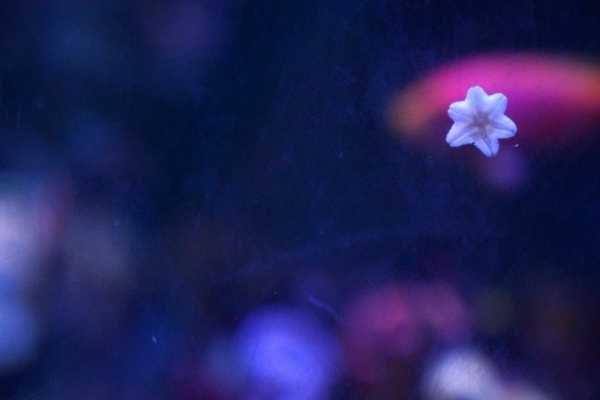
You probably won’t find Asterina starfish available for sale at your local fish store, but you may end up with them in your aquarium anyway. These starfish are generally considered to be harmless, however they can multiply to plague proportions in a reef tank and may actually eat some coral species.
Brittle Starfish
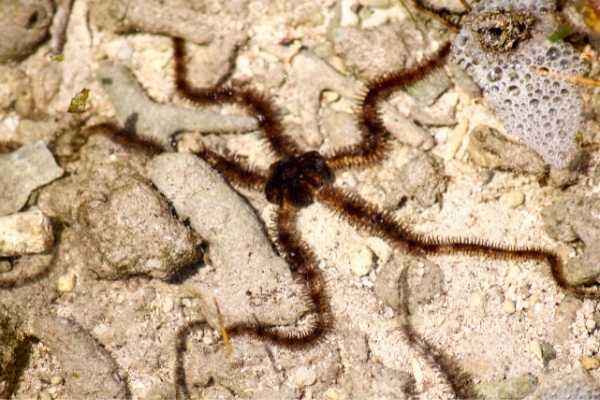
There are several different Brittle starfish species, including Fancy, Banded, Fancy Yellow, and Red. They are reef safe starfish that are relatively common in the trade.
Serpent
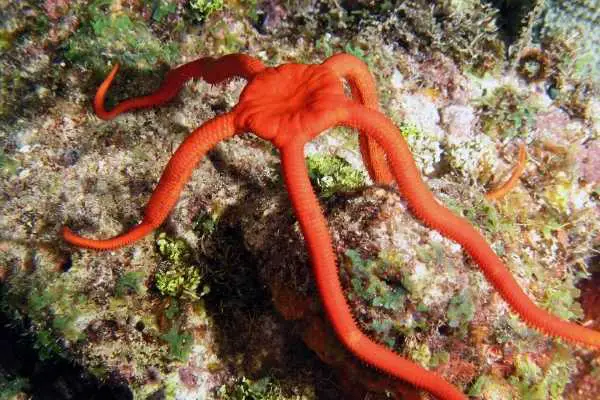
There are a few different Serpent starfish species that you may encounter in the aquarium world. Most are considered to be reef safe. It is best to avoid the notorious Green Serpent starfish or any very large specimens as they are known to be on the aggressive/active scale and may even hunt your unsuspecting fish.
Protoreaster
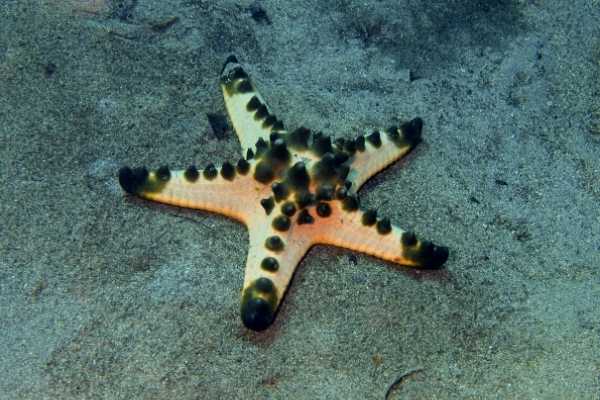
The Protoreaster genus has two of the most commonly seen starfish species in the aquarium trade, the Knobby Sea Star and the Chocolate Chip Starfish. These echinoderms are usually inexpensive and are so cool-looking that they are hard to resist–I know I couldn’t resist them. But the problem is that they are not reef safe. Both the Knobby and Chocolate Chip starfish will eat corals, so they are best left out of the reef tank.
Fromia
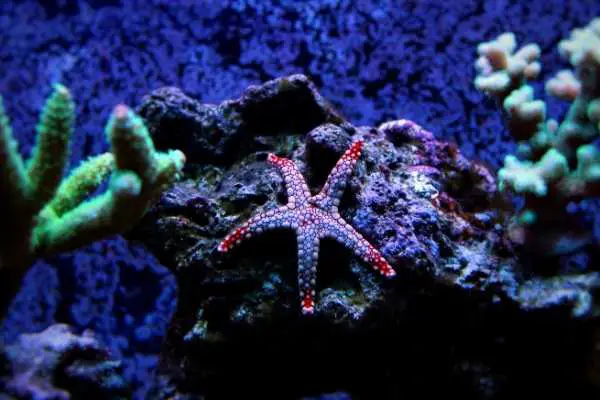
There are three very popular and extremely attractive reef safe starfish from the Fromia genus commonly available.
- Fromia milleporella, The Red Starfish, or Sea Star
- Fromia indica, India Starfish
- Fromia monilis, Red Tile Starfish
Linckia

There are two extremely popular reef-safe starfish species in the Linckia genus, the Red Linckia and the Blue Linckia. They are vibrantly colored and look like they are made out of Play-Doh, which is perhaps the source for the great appeal of these echinoderms.
Sand Sifting
Last but not least, the humble sand-sifting starfish is the #1 Best Reef Safe Starfish on the list. They need a deep sand bed and are very active at moving about that sand bed in search of food.
Incompatibilities with the Starfish on this list
Pufferfish, Triggerfish, and certain shrimp species are known starfish predators, so it is best not to keep any of the sea stars on this list with:
- Dogface pufferfish
- Clown triggerfish
- Niger triggerfish
- Picasso triggerfish
- Queen triggerfish
- Harlequin shrimp
Or any other saltwater fish or invertebrate that they consider a natural food source.
What to read next
Here are a few other invertebrate-focused articles that you should check out:
References
Calfo, Anthony. Invertebrates: An Essential Guide to Selection, Care and Compatibility. Reading Trees (2003).
Shimek, Ronald L. A PocketExpert Guide to Marine Invertebrates: 500+ Essential-to-Know Aquarium Species. TFH Publications (2005).


Leave a Reply